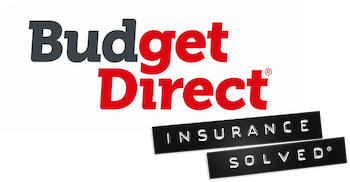Related articles
- Car Insurance Claims – Not My Fault
- Does Car Insurance Cover Rental Cars?
- How Much Does Car Insurance Cost?
- How to turn on Do Not Disturb While Driving
- What are the rules around double demerit points?
- 4 ways to protect yourself against car theft
- 8 simple ways to improve fuel efficiency
- The pros and cons of driverless cars
- What to do if your car is stolen
- Can I get cheaper car insurance with a dashcam?
- How to Switch Car Insurance Providers
- What happens to my insurance when I sell my car?
- Comprehensive vs Third Party Car Insurance
- Cyclist Accidents and Your Insurance Policies
- How to Save on Car Insurance
Disclaimer: This information is general in nature only. While Budget Direct has endeavoured to ensure the information we’ve relied on is accurate and current, we do not guarantee it. Budget Direct accepts no liability for this information.
The Personal Property Securities Register — better referred to as PPSR — is a database of secured property in Australia and is the government’s official platform to register personal property.
A PPSR can help you:
- Register your business interests in property to protect yourself from loss if a customer defaults on a loan or doesn’t meet their obligations.
- Check the register before buying cars, boats, or other property to make sure it does not have a security interest on it (this is ideal for when you’re purchasing a privately owned vehicle).
What is considered ‘personal property’?
Personal property means any property that isn’t land, buildings, or fixtures. This includes, but isn’t limited to:
- Cars and utes
- Trucks, tractors, and trailers
- Machinery
- Tools
- Scaffolding and temporary fencing
- Building materials (before they’re actually fixed to the building)
- Your ‘stock’ if you’re a manufacturer, for example clothing, wine, and furniture
- Jewellery and artworks
How to do a PPSR search
The easiest way to do a PPSR search is by validating the car’s unique VIN, chassis number or by the PPSR number (if you want to find a specific registration).
The PPSR will correct any excluded letters (I, O and Q) from your VIN to better help you find a security interest. It should also be noted that PPSR does not store or maintain any National Exchange of Vehicle and Driver Information (NEVDIS) data.
Why get a PPSR check?
If you’re buying a second-hand car from someone who’s not a licensed dealer then you can use the PPSR to search for whether a second-hand car has any money owing on it, if the car has been stolen, or written off.
Private sellers are not obligated to provide you with all the information about your prospective car. With a PPSR check you’ll gain up-to-date information that will help to protect your car from being repossessed or if someone tries to claim interest on your car later.
Here is what you can check:
- Finance owing – if there is an outstanding loan against the car you purchase and the previous owner stops paying the loan then your car could be repossessed by the lender.
- Reported as stolen – the car may be repossessed and returned to its owner or their insurance company.
- Has been written off – the standard of repairs may be poor, or the car could have sustained substantial damage — which could put you at risk.
- Takata airbag recall – you can confirm its recall status by visiting https://www.fcai.com.au/is-my-airbag-safe.
The PPSR is an Australian Government register designed to help protect consumers, and while other providers charge up to $35 for an online check, Budget Direct provides the same official car history check free of charge.
Validating the VIN
The VIN (Vehicle Identification Number) is a unique 17-character serial number used to identify motor vehicles and open recalls, research the history of vehicles on the PPSR and ultimately deter auto theft.
All VINs are registered by the National Exchange of Vehicle and Driver Information System (NEVDIS) and are crossed registered by the Written Off Vehicle Register (WOVR), in the event of a write-off.
How to ensure the validity of your VIN:
- There’s a security interest against that VIN of the vehicle when you search for the vehicle on the PPSR There’s a serial number used to identify a vehicle-built post 1989, not the number plate or registration number.
- There’s an 11-character or a 17-character VIN on cars built before 1989, depending on the vehicle’s manufacturer and country of origin. Unfortunately, most VINs pre-1989 are difficult to trace and verify.
- There’s a VIN that’s only made up of these characters: 0-9, A-Z (uppercase) and excludes letters I, O and Q. The reason: these letters are easily confused for numbers and other characters. So, if you see an O, I or Q there’s a big chance the VIN is not valid.
The information contained in the VIN will ultimately help to register the vehicle appropriately and ensure its legitimacy and roadworthiness.
It should be noted that some pre-1989 imports do not have a VIN. In order for such a vehicle to be deemed roadworthy in Australia, a VIN must be obtained.
Locating the VIN
Your VIN is located on the body of the vehicle, under the bonnet, at the bottom of the windscreen on the passenger side or along the drivers side door closure area.
The VIN can also be found:
- In the car’s registration certificate
- In your car insurance policy documentation
Reading the VIN
The format is fairly standard:
- The first character shows what country the vehicle was manufactured in
- The next two characters are for manufacturer
- The fourth to eighth characters display the engine size, type, and brand in a mix of letters and numbers
- The ninth character is a security code showing that the VIN has come from the manufacturer
- The 10th character is the model of the car
- The remaining digits are the car’s individual serial number
Australia follows the ISO 3779 VIN standard, which is slightly more complex due to all the countries and manufacturers involved. This is why the government recommends checking your VIN with NEVDIS, to ensure it is both valid and verifiable.
You can also make use of VIN search tools such as Identicar and iRego VIN Decoder and Lookup. The National Vehicle Service Register also offers valuable resources, particularly if your VIN doesn’t match the logbook information.
Protect your vehicle
If you’ve been successful in finding your dream car, then why not insure it from day one with Australia’s Best-Value Car Insurer?
Over 3 million Aussies have had their Insurance Solved™ by Budget Direct, by offering dependable cover at a price that’s hard to beat.
Find a level of cover that suits you, and if you buy a new policy online, get 15%^ off your first year’s premium.
Related articles
- Car Insurance Claims – Not My Fault
- Does Car Insurance Cover Rental Cars?
- How Much Does Car Insurance Cost?
- How to turn on Do Not Disturb While Driving
- What are the rules around double demerit points?
- 4 ways to protect yourself against car theft
- 8 simple ways to improve fuel efficiency
- The pros and cons of driverless cars
- What to do if your car is stolen
- Can I get cheaper car insurance with a dashcam?
- How to Switch Car Insurance Providers
- What happens to my insurance when I sell my car?
- Comprehensive vs Third Party Car Insurance
- Cyclist Accidents and Your Insurance Policies
- How to Save on Car Insurance



